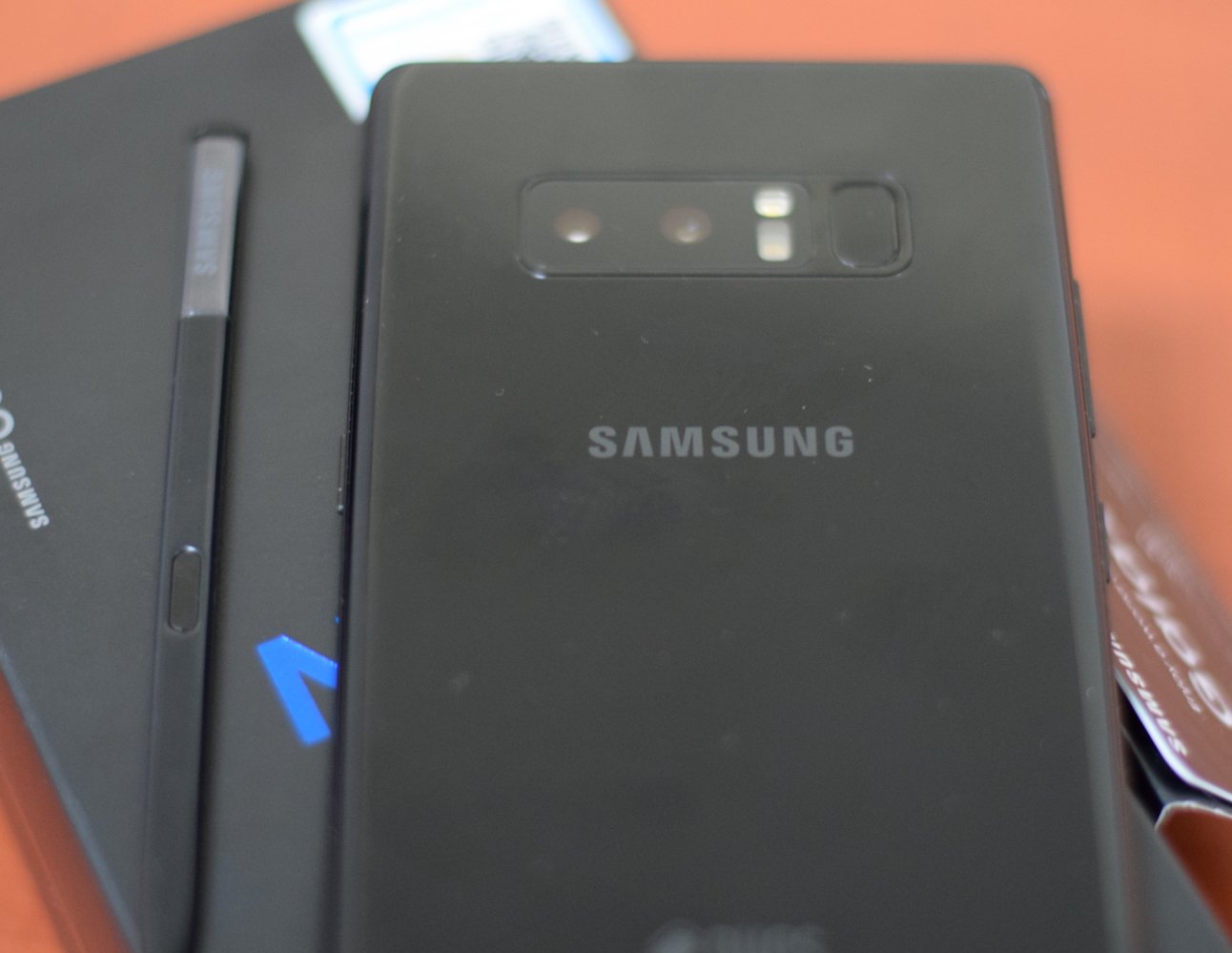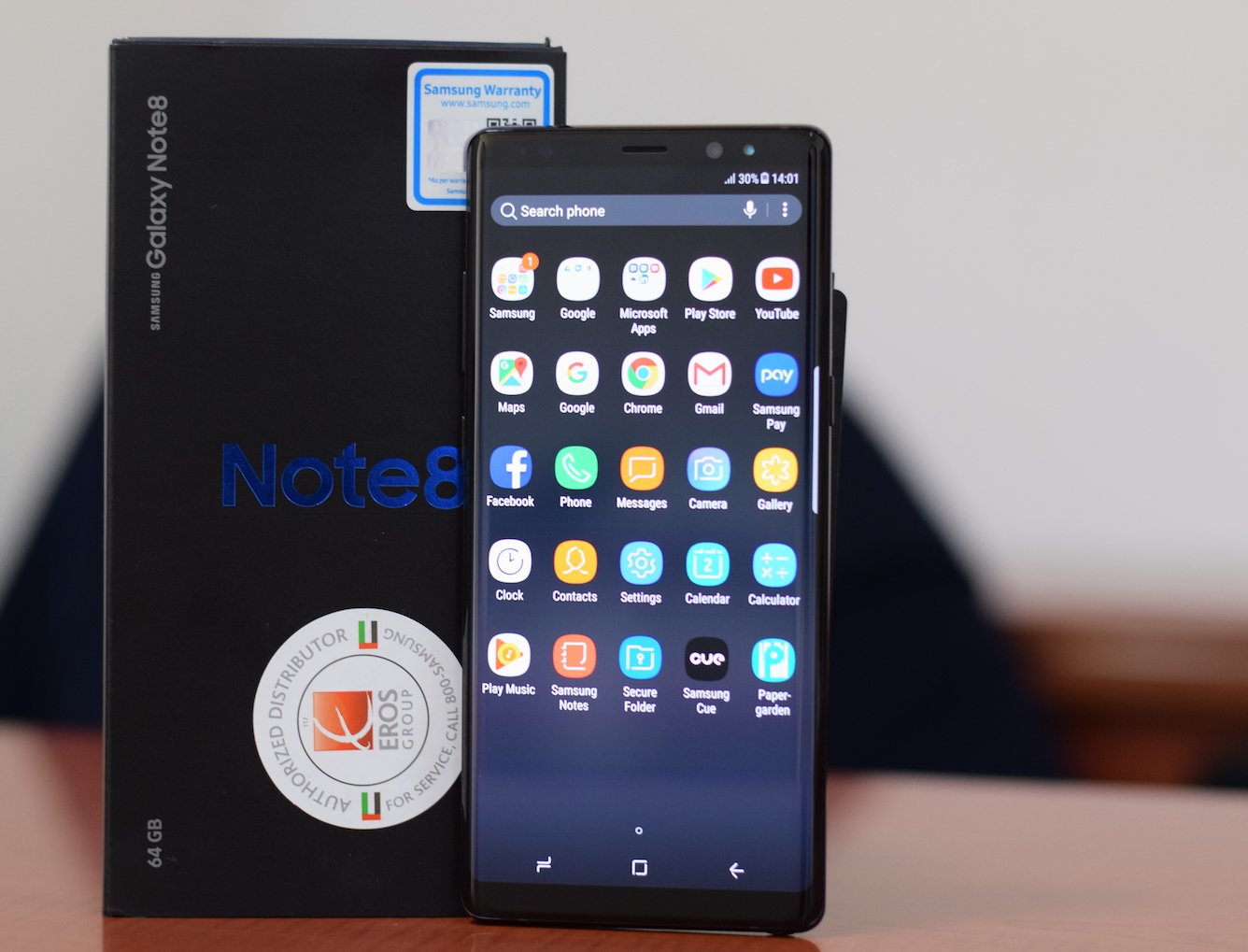Samsung has bested the already awesome S8 and S8+, with the new Galaxy Note 8. After the battery issue that nearly killed the Note series, Samsung has risen from the Note 7’s ashes to put forth a brilliant device with the Note 8.

Samsung has given a lot of attention to detail with the new Note 8. The device comes with a gorgeous design, an incredible 6.3-inch screen, great software and excellent stylus. Have said all of that, there really isn’t anything to not like here.

In terms of design, the Note 8 seems like a stretched Galaxy S8+. The metal frame on the sides are a bit thicker, with the overall width standing at 8.6mm. This phone is also a bit heavier at around 195-grams. You might think that a phablet of this size would not be easy to handle.

Believe me, I have small hands and I was able to manage it better than the S8+. One thing that you’ll notice that is quite different from what Samsung has come out with so far, is that the body is much more square and angular. Even the dual curved display is less pronounced this time around.

Instead of a completely smooth taper between the glass and metal all the way around, the Note 8 has a much more distinct separation between the glass and metal. The sides are now much flatter, giving a phone that’s usually slippery a lot more grip.

On the front you get a 6.3-inches display with an aspect ratio of 18.5:9. The screen is the usual Samsung Super AMOLED technology that brings all the typical characteristics that we’ve seen on previous Samsung phones such as vibrant colors, high contrast, and inky dark blacks. The display offers a resolution of 2,960 x 1,440, or 3K QHD+. It is incredibly sharp but in order to enjoy the display to its fullest potential, you’ll have to change the display resolution in the settings as the phone defaults to 1080p.

The Note 8’s screen also comes with a mobile HDR certification. This means that the will be able to play back true HDR content. On the top of the screen you get an 8 megapixel front-facing shooter. On the left edge of the device you get the volume rockers along with a dedicated Bixby button. On the right edge, you get the power button. On the bottom of the device you get the USB-C port along with the 3.5mm audio jack. You also get a slot for the S-Pen on the bottom.

The S-Pen that comes with the Galaxy Note 8 looks and feels a lot more premium than before. It weighs just 2.8 grams and features a finer tip. It’s also IP68 certified, just like the Note 8, and supports 4,096 levels of pressure sensitivity. The S-Pen clicks in and out of its silo and it only goes in the right way. So there’s no chance of it getting stuck or its mechanism broken.
On the top edge you get the dual SIM hybrid slot. The hybrid dual SIM slot can accommodate either two Nano-SIMs or a single SIM and a microSD card (up to 256GB). On the rear of the Note 8, you get a dual camera module that comprises of two sensors behind two lenses, an optical heart-rate monitor, LED flash, and a fingerprint scanner. On a phone this size, this is most certainly the wrong place for the fingerprint scanner and is almost impossible to reach when pulling the phone out of your pocket.
Inside the box, the Samsung Galaxy Note 8 ships with a Type-C cable, power adapter, AKG earphones, SIM ejector tool, extra pen nibs and a tweezer to insert them, a clear plastic case, a Micro-USB to Type-C adapter, and a USB Type-C to Type-A adapter. The bundled accessories are of very good quality, especially the headset. You also get a Galaxy VIP card that lets you avail 20% off on hotel stays, spa use, and restaurants at any of the regional Marriott Group properties.
Inside, the phone runs on a 10nm Exynos 9 Octa (8895) SoC along with 6GB of LPDDR4 RAM and 64GB of storage. UI and app performance is blazing fast and we didn’t experience any slow-downs during the review period. Benchmark numbers are similar to those of the S8+ (4GB). In AnTuTu, we got 175,317 points and in Geekbench we got 2002 single-core score and 6732 multi-core score.
The Galaxy Note 8 also comes with an Iris scanner, which was very quick at authentication, irrespective of the lighting conditions. In terms of day to day performance of the Galaxy Note 8, we didn’t face any performance lags, and multitasking was very speedy. Apps also loaded quickly. Apps such as Autodesk Sketchbook, INKredible, and Bamboo Paper are some of the must-have free apps for the S-Pen. Samsung’s own Notes app is quite versatile, allowing you to take advantage of the pressure sensitivity of the stylus.
In terms of photography, the Galaxy Note 8 offers stellar performance. The image quality with the main sensor is nothing short of amazing. Samsung seems to have toned down the colours with this new firmware. Thus, landscapes and close-ups don’t have exaggerated colours like they do with the S8 series. The camera focuses on the subject very quickly and you end up with some amazing shots.
The Samsung Galaxy Note 8 comes with a smaller battery than the S8+, at 3300mAh. On a single charge, we were able to use the phone for a little more than a day before it needed recharging. The Samsung Galaxy Note 8 comes with fantastic build quality, excellent cameras, a gorgeous display, and a very useful stylus, which is synonymous to the quality Samsung’s Note series boasts of. The Galaxy Note 8 does not disappoint when it comes to an Android flagship, and thus it walks away with the Editors’ Choice award.
Price: AED 2,999











